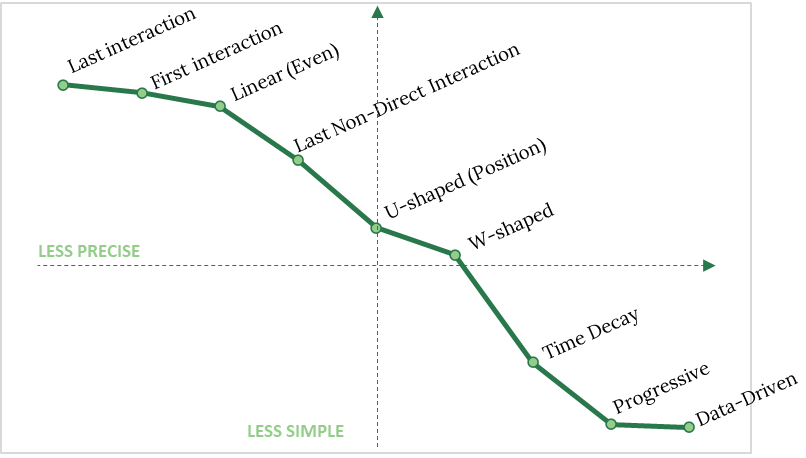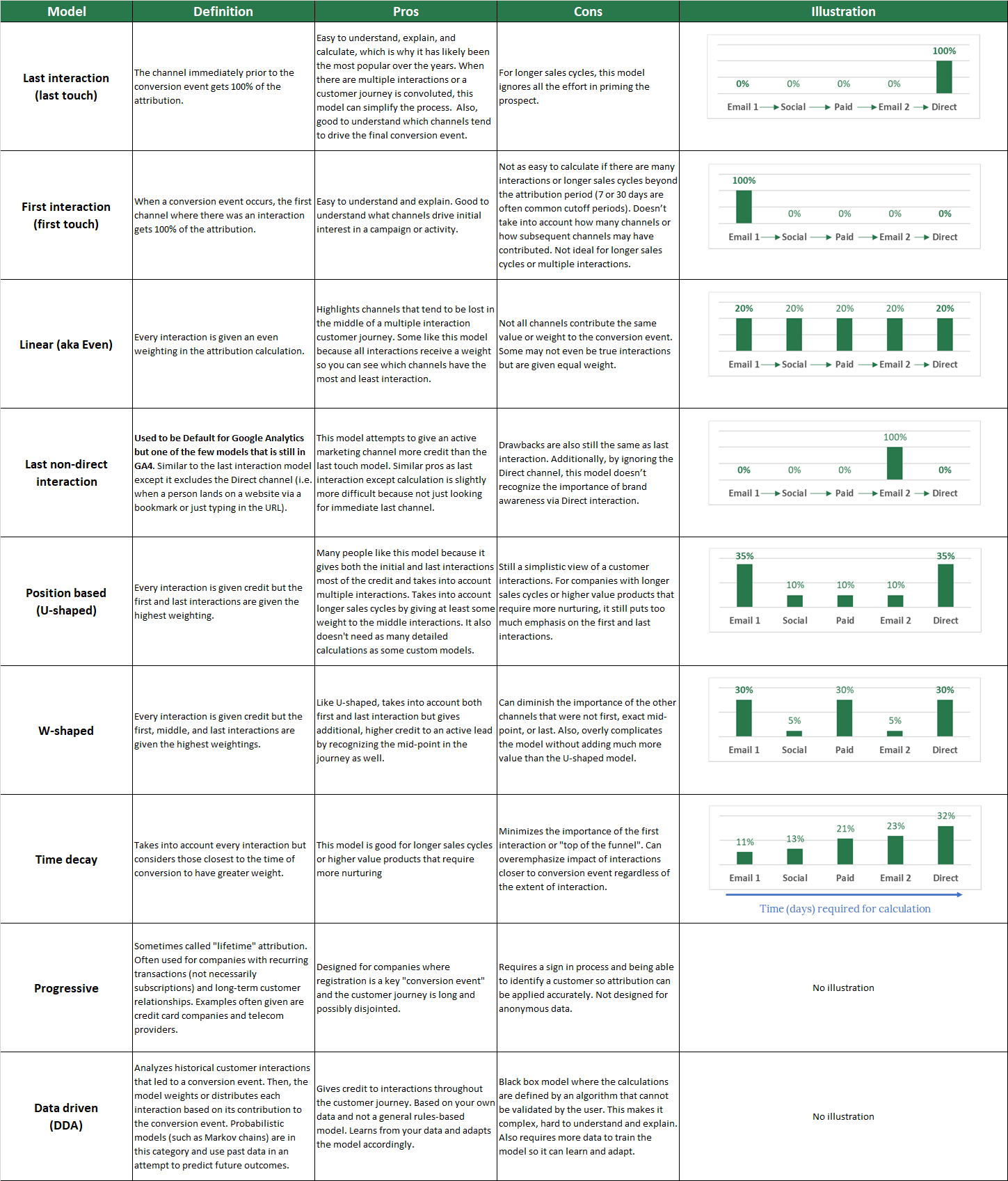A Tribute to Attribution Modeling
Attribution modeling - or the allocation of a conversion event to a customer interaction - is important to determine how a marketing activity is performing. The challenge is that customers often have multiple interactions prior to conversion. Combine that with the many different ways you could attribute conversion and you end up with a fairly complex situation. So, do you just throw your hands up in the air and give up? I recommend not. Just take a deep breath, grab a cup of coffee or tea, and finish reading this post.
But before I get into the details on the different types of attribution models, I should mention there is no one model that is considered the best. Each model has its pros and cons, depending on the situation and business need. But there are ways you can compare them. I came across this method of comparison from Klaviyo where they suggested that different attribution models can be regarded on a continuum based on simplicity vs precision.
The following chart uses the idea of Klaviyo’s Simplicity-Precision continuum to show where some of these most common attribution models fall. Below the chart is a table (clickable image) that provides the descriptions and illustrations of how each attribution model works along with their pros and cons.

Click on the table to open the image, which will allow you to zoom in on the text
So, do you need to do all the fancy mathematical calculations for these models all on your own? Heck, no! There are many tools out there to help you measure attribution with Google Analytics still being one of the most common tools. Although UA (Universal Analytics) used to have almost all these models available, by late 2023 Google’s GA4 (UA’s replacement) will have removed the majority of them leaving only data-driven and last click. This has made lots of people very unhappy.
In an article from April 6, 2023 a Product Manager from Google stated that “Data-driven attribution is now the most-used attribution model for conversions used for automated bidding in Google Ads.” This doesn’t mean the other attribution models are not valuable, simply that Google has found their AI-based data-driven model is the most used in their ecosystem. Or maybe, it’s the one they want people to use the most? Not sure what the real answer is (although I'm sure it falls on a continuum of their own), but the other models are gone from their tool for now.
So, what if you want to use something other than Google's data-driven or last click? Well, there are still lots of choices out there. The decision comes down to what you need, what you’re willing to learn, and what you’re willing to pay. Here are some tools I’ve come across in my own research to get you started on your research. I haven't used many of them but have included them here because their websites specifically discuss attribution modeling and which models their tools use.
- Rockerbox – also uses a proprietary data driven model
- Ruler Analytics – uses 5 different attribution models including first touch, last touch, linear, time decay, and full path (defined by Ruler Analytics)
- Adobe Analytics - includes almost all the ones discussed in this post as well as J-curve, inverse J and algorithmic models
- Branch.io – uses probabilistic modeling
- Attributionapp – can choose between their automated models using machine learning algorithms or the traditional rules-based models discussed in this post
- Wicked Reports – allows you to choose different attribution models based on the type of question you are trying to answer
- Windsor.ai – integrates with Google Big Query and uses probabilistic Markov models
Just in case you are interested in going deeper into the world of attribution modeling, and because I'm a big believer in transparency and sharing knowledge, here are the resources I used (along with my own knowledge and experience) to create this Tribute to Attribution Modeling. 😁
General attribution modeling sites
Attribution models and how to pick one
Information on specific models

